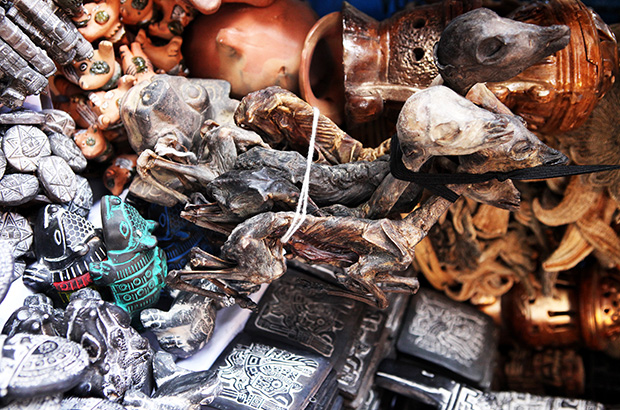FAQ
- Bolivia climbing questions
-
Mallorca island and rockclimbing
- What are main specifics of rockclimbing trip to Mallorca
- Mallorca island impressions
- Rockclimbing safety Spain
- Mallorca climbing accommodation
- What season is possible for rockclimbing in Mallorca
- Transport accessibility of climbing sectors in Mallorca
- Active vacation in Mallorca
- Saint Anthony night in Mallorca
- Peru climbing questions
- Gear reviews
-
Safety in the mountains
- How NOT to climb the summit?
- Mountain navigation
- At the limit of possibilities
- Mountain thunderstorm
- Solo ascents and mountain trips alone
- Mutual responsibility in mountaineering
- Safety illusions in the mountains - a rope
- Independent team of two
- Mountain troubles
- Psychological problems in the mountains
- Health in the mountains
-
Elbrus questions
- Elbrus climbing gear
- Climbing Elbrus with children?
- Mount Elbrus location?
- Elbrus logistics
- How to get to Mount Elbrus?
- Elbrus German airfield?
- Elbrus difficulty grade
- 5 points beginner must know about Elbrus
- How to prepare for Elbrus?
- Are there avalanches on Mount Elbrus?
- Climbing Elbrus solo?
- Seasonality of climbing Mount Elbrus
- How much time climbing Elbrus takes?
- Clothes for Mount Elbrus?
- Pressure at the top of Elbrus?
- Elbrus air temperature
- Elbrus sightseeing
- How much to climb Elbrus
- Gear questions
- Mountaineering questions
- Mountain climbing training
- Rockclimbing questions
- Horse riding tours
- Iceclimbing questions
-
Questions on the alpine programs
- What to climb in Morocco?
- Weekend summit climb
- Georgia 2023
- Pico Aneto - what is that mountain?
- Mountain programs format
- Mountain climbing food ration
- Queries on the alpine program climbing Mount Bazarduzu
- Queries on the Kamchatka alpine program climbing
- What is combined program?
- What is sightseeing program?
- What is pilot program?
- What programs you have of the medium complexity level?
- Basic expedition rations
- Prices for the mountain climbing programs
- Queries on the Mountain Course in Adyl Su valley
- Program complexity?
- Questions about MCS AlexClimb
- Questions related to trekking programs
Bolivia sightseeing
Read in Telegram in English
Leer en Telegram en Español
Our collection of routes in Bolivia here
What interesting excursions in Bolivia can be combined with mountaineering?
Bolivia is a small, but very interesting and distinctive country, with amazing potential for a wide variety of outdoor activities, such as trekking, mountaineering, mountain biking, jeep or motorcycle expeditions, bird or animal watching etc.
Bolivia - overview of the main general tourist destinations
In addition to the natural attractions of Bolivia, the mysterious heritage of the Inca Empire makes it possible to immerse yourself in the secrets of the history of disappeared civilizations.
All this wealth is located at the altitudes of more than 4000 meters. After all, the main feature of Bolivia is that it is a highland country that has no access to the sea, and 80% of its territory is the highland Sierra.
Traveling in the the Bolivian mountain desert - Sierra
Accordingly, you should not expect beach or even high rating resorts here. But if you are not looking for the gloss of expensive hotels, you will be struck to the very heart by the simplicity and brightness of Bolivia, the modesty and at the same time the grandeur of the mountain peaks, of its ancient traditions closely intertwined with the acute processes of modern history.
La Paz is the highest capital in the world
My profession that brought me to Bolivia is mountaineering. The mountains here are as accessible as nowhere else in the world. In fact, when your plane lands at the airport in La Paz - El Alto, you already find yourself in the mountains - then what you just have to do is to choose the peak and start climbing.
Climbing Huayna Potosi - one of the most accessible 6000 thousand peaks in the world located two hours drive from La Paz
However, in this text I want to write not about how you can beautifully and tastefully assemble a collection of fantastic mountain routes in Bolivia. I just want to talk about what you can do in Bolivia between climbs, or without climbing at all, in the format of a comfortable and exciting touristic trip.
But always in close contact with nature and energy of the mountains.
Mountains and people in Bolivia live in the same world for thousands years, next to each other. Further I will list the most obvious options for active programs that can make your trip to Bolivia varied and unforgettable.
But you should keep in mind! The following options are the most obvious, but they are top of the iceberg. Whatever topic brings you to this country, the potential of Bolivia is enormous, without hesitation you can spend much more time studying and describing it, than it would take to write a short review article... So, let's go!
Bolivia's most popular car - Toyota Land Cruiser 80 - an absolute off-road classic
The first, one of the most famous natural attractions of Bolivia, without hesitation, can be called the Salar de Uyuni. The world's largest high-mountain salt lake of colossal proportions (over 10,000 sq. km in area), is encased in a thick (up to 10 meters thick) salt shell.
Salar de Uyuni
The Uyuni Salar is a remnant of an ancient ocean, raised to an altitude of 3656 meters by tectonic processes, and over millions of years it has lost most of its water volume. Evaporating, the salt water left a crust of crystalline salt on the surface, which, today, is a perfectly flat, endless, dazzling white salt desert.
You can drive hundreds of kilometers in any direction along the perfectly flat surface of the salt lake
The Uyuni Salt Flat is popular destination for a variety of expeditions, of which the most convenient and safest format is traveling by off-road vehicle. The vast distances and harsh climate of the Bolivian Sierra require good preparation and experience. With the right choice of a route and high-quality organization, this amazing corner of the Earth can give to you the most vivid and unforgettable impressions.
The travelers community Salar de Uyuni knows no state borders - tourists come here from all over the world
In addition to the tourist attractiveness, Salar de Uyuni also has a utilitarian meaning - salt is mined here (quite obvious fact, you should agree). As well but not as obvious is that the perfectly flat and highly reflective surface of Salar de Uyuni is used by the NASA space agency to calibrate their satellites.
The Uyuni Salt Flat is an ideal natural mirror of colossal proportions
In February, Salar de Uyuni is very popular among photographers. At the end of the rainy season, the salt surface is covered with a thin layer of water, creating magical effects of reflection and optical illusions. Photographers from all over the world come here to realize their creative ideas. The distance from La Paz to Uyuni is 550 kilometers south, towards Chile. The easiest way to get there is by tourist bus, which takes about 8 hours. You can choose both day and night bus services.

Salar de Uyuni
Once you are in the town of Uyuni, where begin all the routes in the Salar de Uyuni area begin, do not forget to have a look at the “Steam Locomotive Cemetery” - a monument to human vanity and faded ambitions. The pile of old metal was once the gleaming, steam-hissing locomotives that carried freight and passengers during the colonial era.
Uyuni Steam Locomotive Cemetery
Abandoned rails and the remains of ancient trains can be found in many places in the Bolivian Sierra regions bordering with Chile. But near Uyuni town there is a whole exhibition (garbage hip) of ancient English steam locomotives of various types and models.
The Uyuni town, Bolivia - Gateway to the Sierra. Starting point of many very interesting routes to the Salar de Uyuni
In the other direction from La Paz, to the north, towards the border with Peru, just a two-hour drive from the capital (115 km) there is the second key natural attraction of Bolivia - Lake Titicaca.
Lake Titicaca located on the border of Bolivia and Peru
Even the dumpiest schoolboy has probably heard this funny name. And anyone who didn’t skip his geography classes at school may even remember that Titicaca lake is the highest freshwater lake in the world. By the way, the name Titi-kaka comes from the Quechua language, in which this word means “mountain lynx.”
Lake Titicaca is home to an entire archipelago of small islands - almost all of them have been inhabited since the immemorial time.
The surface of the lake is located at an altitude of 3812 meters above sea level - at the same time, Lake Titicaca is completely navigable and has developed year-round navigation. Lake Titicaca stretches from north to south for a distance of about 170 km, with a width of approximately 60 km. According to the modern measurements, Lake Titicaca has a depth of up to 280 meters. Of course, this is not Lake Baikal in Siberia, but the scale is also impressive.
All the islands of Lake Titicaca are connected by a dense network of water routes - boats operate like minibuses throughout the lake
Waterways connect the numerous inhabited islands of Lake Titicaca with each other and with the mainland. The most famous islands of Lake Titicaca - the Island of the Sun and the Island of the Moon - have been inhabited since the time of the Inca Empire, or even earlier. According to the results of modern archaeological research, these islands were sacred and were used for religious rites. On the islands you can see in abundance the remains of ancient structures and buildings dating back to more than 1000 BC.
Moon Island in Lake Titicaca - all covered with the remains of ancient terraces - traces of human activity from the time of the Inca Empire
In this unlikely case if you get tired of the natural attractions of Bolivia, you can change the theme of your trip and touch one of the most mysterious pages of the history of our world - the monuments of the Inca culture.
There are many such sites in Bolivia - both well-known and popular, and as well those still unexplored by modern science.
The historical monuments of Bolivia silently keep the memory of the mysterious civilizations of the past Among the key historical attractions of Bolivia (if you are at least a little interested in the theme of history), you cannot ignore the Tiwanaku Monument - one of the oldest and largest settlements of the pre-Columbian era in South America. The monument dates back to 1000-800 BC and contains many unsolved secrets and mysteries. In fact, in general, no information has reached us about the builders, purpose, technologies of that era...
.jpg)
The Gate of the Sun is the central part of the Tiwanaku complex of the Inca era in Bolivia - its scale and semantic richness are impressive
Many historical monuments can be found in the vicinity of Lake Titicaca and on its islands. For lovers of subtle sensations, I can offer the idea of an amazing excursion - watching the dawn on the Island of the Sun on the ruins of an ancient Inca temple.
An unforgettable experience is guaranteed. Most likely, this ancient sanctuary was built precisely for this purpose in the picturesque surroundings of a crystal clear lake surrounded by snowy peaks of Cordillera Real. For those who know how to feel the world around them, there is no need to explain what it means to meet the sunrise in such a place.
Sunrise over the peaks of the Cordillera Real and Lake Titicaca
Many attractions, both natural and historical, can be found in the vicinity of the capital of Bolivia - La Paz. However, the city itself is highly recommended, if not to thoroughly explore, then at least to take a closer look!

Amulets, potions and even dried corpses of baby llamas. Such diversity will drive crazy even the most sophisticated witch...
Just consider visiting the Sorcerers' Market in La Paz where they sell everything necessary for any magical rituals from Voodoo to forbidden Necromancy!
Without any exaggeration, I can say that there is no other capital in any other country of the world as bright and, in its own way, expressive as La Paz!
Don't delay your trip to Bolivia! Local beauties are looking forward to see you soon!
The author of the text and photos - Alex Trubachev
Your professional guide to the mountain routes of Bolivia, Peru, Chile and Argentina
MCS EDIT 2024
Our Principles
AlexClimb Rule #1 - Safety First
From the very beginning of our activity, here nearly 16 years, the first Principle of work of School of mountaineering and rock-climbing of MCS AlexClimb is the Safety Priority. On the basis of this Principle all process of training is based, all programs and rounds are developed and carried out only within this main principle. We consider that at professional approach to development of programs, at personal discipline and correctly put motivation - occupations by mountaineering and rock-climbing are COMPLETELY safe. And from the return - all troubles and accidents in our sport come from nonprofessionalism, from ignorance or neglect by elementary standards of safety, from irrational motivation, from revaluation of own forces and opportunities. All these prerequisites we COMPLETELY EXCLUDE in our work - ours Rock-climbing, Ice climbing and Mountaineering are based on one Principle - the Safety Priority. In rock-climbing, mountaineering and ice climbing, the Priority of Safety of MCS AlexClimb-is your personal security and comfort irrespective of, than we are engaged - we train muscles and we work technology of the movement in the sports hall and on the rock climbing wall, we make the way through snowstorm to top or we relax on golden sand of the Caribbean beach after hot day of trainings on rocks. The Safety priority - the main credo of School of mountaineering and rock-climbing of MCS AlexClimb.
AlexClimb Rule #2 - Leave No Trace
Closely interacting with Nature, working with the active programs in mountains, woods, lakes and rivers, we perfectly understand the importance of carefull and respectfull bahavior towards the Nature, for its resources. From the very beginning of our outdoor-activity we adopted rules of Leave No Trace technique - the standard of behavior of the person accepted in all the civilized world in relation to environment and especially - to the wild nature. After all on the relation of people to the nature near which they exist, itself can draw dalekoidushchy conclusions on the relation of these people to... Where and as we didn't travel - we don't reserve any garbage, we try to reduce whenever possible our influence on environment to a minimum. We clear earlier zagryazyonny tourist parking of the left garbage, we take out and we take out to utilization places that to us other people left there. We consider that only thus, at personal individual consciousness of each citizen, each tourist, climber or autotraveller, we will be able to keep the nature surrounding us in its state, natural, suitable for life, - in it pledge of the healthy future for ourselves and our children.





